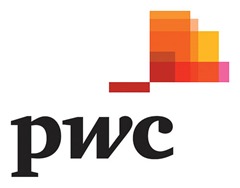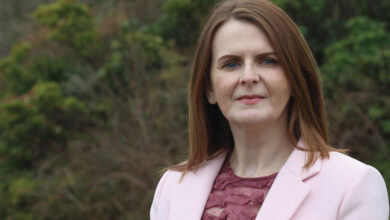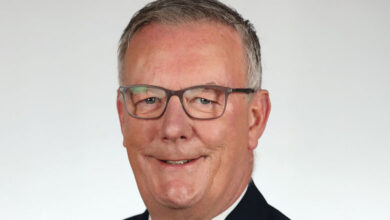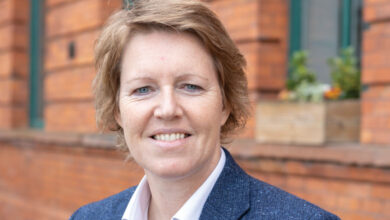Balancing speaking up with speaking out
 PwC Partner Ian McConnell reflects on the changing nature of whistle-blowing and the increasing requirement on organisations to ensure that wrongdoing is reported.
PwC Partner Ian McConnell reflects on the changing nature of whistle-blowing and the increasing requirement on organisations to ensure that wrongdoing is reported.
When Paul Kimmage’s book, Rough Ride, exposed the widespread drug abuse in professional cycling and exposed Lance Armstrong’s use of performance-enhancing drugs, he became the most famous whistle-blower in sport.
As a professional cyclist, Paul Kimmage represented Ireland at the 1984 Los Angeles Olympics and competed in his first Tour de France in 1986 before quitting the sport to write his award-winning expose on doping. Much of his subsequent career as a successful sports journalist was devoted to revealing the extent of doping in professional cycling and, in particular, to challenge the claims of seven-times Tour de France winner Lance Armstrong that he had never taken drugs.
But, when he visited Belfast recently as a guest at PwC’s Fraud Academy event, Kimmage told the BBC’s Mark Carruthers and the audience that being a whistle-blower on substance abuse in sport in the mid-1980s was perceived as being worse than those he accused. “I stood up and tried to address that problem. And I got kicked for it. Men who were once friends practically spat at me,” he recalls.
After nearly a quarter-century of an anti-doping crusade, Kimmage was vindicated when the US Anti-Doping Agency charged Armstrong with using performance-enhancing drugs and stripped him of his seven Tour de France victories; Armstrong subsequently admitted to Oprah Winfrey that he was a liar and a cheat.
A quarter-century later and whistle-blowing has changed too. Whistle-blowing is an integral part of strategy to encourage a culture of transparency and open communication within organisations. Public Concern at Work recently reported a 60 per cent increase in whistle-blowing cases in the UK health sector alone. Birmingham City Council is just one of a number of public sector organisations to launch a new council-wide whistle-blowing and serious misconduct policy for 2015, which aims to improve the process for anyone with concerns or issues relating to the city council.
Many organisations have come to recognise that where they don’t actively provide an internal process whereby staff can report issues and concerns, and be confident of a fair hearing, they can expect those staff to blow the whistle outside of the organisation and the potential adverse media coverage and reputational damage it brings. That’s regardless of whether wrongdoing relates to financial fraud, criminality or poor service delivery.
Of all the worries faced by financial directors and accounting officers, becoming the victim of corporate fraud ranks close to the top. Not surprising when the UK’s Serious Fraud Office estimates the annual loss due to fraud as around £66 billion. That’s made worse by the experience of the 5,000 respondents to the PwC Global Economic Crime Survey 2014, where those who had suffered economic fraud admitted that 56 per cent of perpetrators were internal.
There are three main actions to detect corporate fraud: corporate controls, corporate culture and detection from outside the organisation. It may be that corporate culture is where the greatest potential for detection exists. Organisations and government are working hard to persuade employees that they will be recognised, and protected, for “doing the right thing”.
But there’s still work to do
Back in 1998, the UK’s Public Interest Disclosure Act (PIDA) was intended to protect individuals who “make certain disclosures of information in the public interest.” Put simply, any worker who believes that he or she would suffer a detriment if they disclosed certain issues to their employer is protected in the eyes of the law. And while employers were not required to put in place whistle-blowing arrangements, those who don’t are running the risk that employees will take their concerns outside the organisation – frequently to the media.
In April 2013, the Enterprise and Regulatory Reform Act introduced a public interest test into PIDA and significantly strengthened whistle-blower protection. Where whistle-blowers are victimised by co-workers, the employer is held accountable if they cannot demonstrate that they took reasonable steps to prevent the victimisation. Since June 2013, victimised whistle-blowers have been able to seek damages and redress through employment tribunals.
Just what is a whitstleblower?
Just what is a whistle-blower? Whilst there is now a relatively robust legislative framework to protect whistle-blowers, many organisations, particularly in the public sector, are struggling to identify workable and transparent whistle-blowing arrangements. The first task, however, is to define whistle-blowing in the context of the organisation.
Government says that whistle-blowing is when a worker reports suspected wrongdoing at work (thus making certain disclosures of information in the public interest enshrined in PIDA). Workers can report things that aren’t right; are illegal; or if anyone at work is neglecting their duties, including where:
• someone’s health and safety is in danger;
• damage to the environment;
• a criminal offence is (or has been) committed;
• the organisation is not obeying the law; or
• the organisation is covering up wrongdoing.
The regulations in Northern Ireland are slightly different at www.nidirect.gov.uk/
protection-of-whistle-blowers
All messages about whistle-blowing should come from the top
There is no one-size-fits-all solution when it comes to developing whistle-blowing arrangements. Indeed, organisations should try to tailor the design of their whistle-blowing arrangements according to their unique operational and cultural circumstances. Nonetheless there are five key stages, each of which should be a milestone in any design and implementation plan. By considering each milestone, the organisation can expect whistle-blowing arrangements that are fit for purpose. The one inflexible rule, however, is that all messages about whistle-blowing should come from the top.
The five key milestones in the development of an effective whistle-blowing programme are:
1. gaining top level commitment – ethics and culture, governance and ownership;
2. developing a whistle-blowing policy – purpose, risk and content;
3. designing whistle-blowing reporting mechanisms – direct and indirect reporting, internal and external;
4. embedding a whistle-blowing programme – guidance and advice, training, case management and feedback;
5. reporting, monitoring and evaluating whistle-blowing arrangements – reporting and retrospective review.
There is no quick fix to designing and implementing a whistle-blowing programme, but the PwC publication ‘Striking a Balance – whistle-blowing arrangements as part of a speak-up strategy’ can help, available from the PwC Fraud Academy website at www.pwc.co.uk/fraud-academy/publications
Paul Kimmage reached a phase of his career where it was obvious there was doping going on around him. Kimmage made a hard choice to do the right thing but if his sport had embedded, and fostered, an effective whistle-blowing process, the cost to Kimmage and the sport, would have been much, much less.
Ian McConnell leads the Northern Ireland PwC Forensic Services team and can be contacted on 028 9041 5681.






